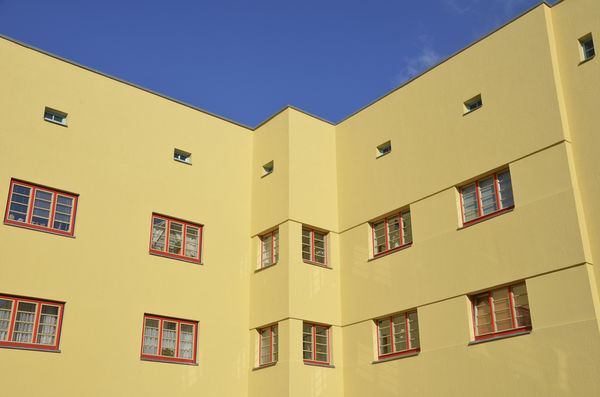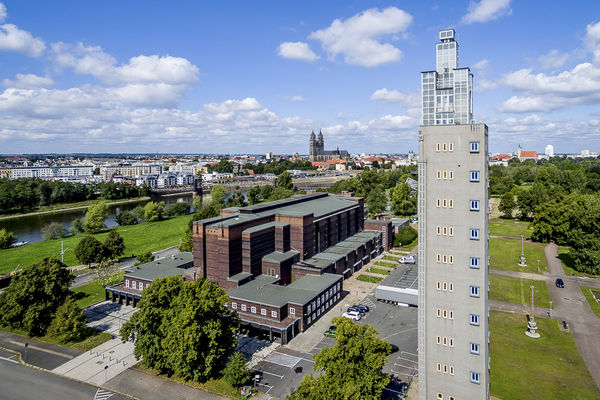Magdeburg – CITY OF NEW CONSTRUCTION WILL
During the Weimar Republic, the current state capital Magdeburg reoriented itself to the call of modernism earlier and more consistently than other cities, attracting attention throughout Germany. Under the direction of Mayor Hermann Beims, Magdeburg underwent a real reformation from 1919 to 1931 through innovations in many areas, allowing modernism to develop across many aspects and themes. The spirit of modernism in Magdeburg in the 1920s was also clearly expressed in the stylistic idiom of its architecture. Many buildings from this period have survived and constitute a significant architectural heritage of modernism – above all, the city hall area on the Rotehorn island in the Elbe and the Hermann Beims housing complex are among the most significant examples of the many worker’s housing estates in Magdeburg.
OTTO-RICHTER-STREET
The cooperative housing estate was built between 1904 and 1916. At the beginning of the 1920s, parts of the façade under the direction of Bruno Taut were provided with brightly colored to "screaming colorful" paintings. Carl Krayl was entrusted with the implementation. Particularly spectacular: the "lightning façade" of the house No. 2.
TOWNHALL MAGDEBURG
The town hall was built in 1927 according to the plans of the architects Johannes Göderitz and Wilhelm Deffke on the occasion of the German Theater Exhibition. At the time, it was the most progressive city hall in Germany. The building is complemented by the 60 meter high Albinmüller tower and the horse gate.








